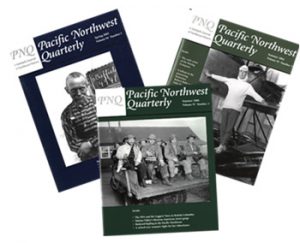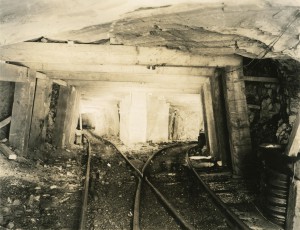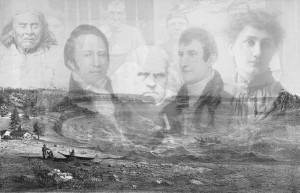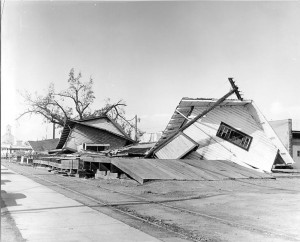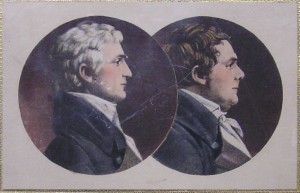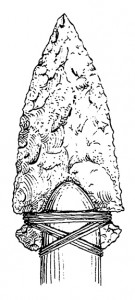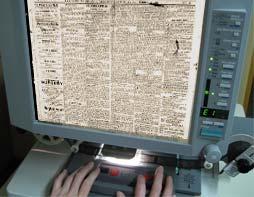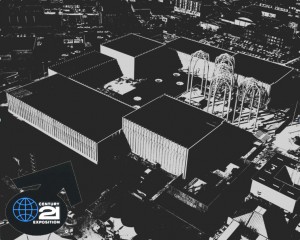 From the desk of Sean Lanksbury. PNW & Special Collections Librarian
From the desk of Sean Lanksbury. PNW & Special Collections Librarian
49 years ago, Seattle’s Lower Queen Anne district was abuzz with excitement. Many locals were curious to what the futurist wonder of the Century 21 World Exposition – still in construction – would hold for them when it opened. Others were skeptical of the prospects for success and debated the costs involved. Seattle now prepares for the 5oth Anniversary of the Fair, and it feels like a good time to give a brief overview of its history and impact on the city, and to highlight a few things that might assist researchers preparing histories of the event.
The World’s Fair began as the desire and vision of one man in particular, city council member Al Rochester (1895-1989). As a young boy he attended Seattle’s Alaska-Yukon–Pacific Exposition (AYPE) held in 1909 on the nascent University of Washington campus. Recalling the civic pride and recognizing vast commercial potential in such a grand event, Al wanted to commemorate its 50th anniversary with another Seattle exposition.
Though Al’s idea was slow to excite the imagination of potential boosters, it eventually caught hold. The Washington State Legislature was approached with the concept. On November 20, 1955 the legislature resolved that a World’s Fair Commission would be created and given $5000. Then the City Council submitted a bond proposal of $7,500,000 was issued to the people of Seattle. The voting majority approved it 187,053 yea to 63,752 nay. The State of Washington matched that bond with an additional $7,500,000 bond, funded by an increase in Corporations fees. The fees were adjusted by the legislature after realizing that they were significantly below all other western states and had been left unadjusted since statehood in 1889!
Construction began on a 74-acre plot at the base of Queen Anne Hill that prior to white settlement was known to natives as Baba’kwob, a prairie used for tribal gatherings. In the 1860’s the land was homesteaded by early pioneers David Denny and Louisa Boren Denny, but retained the nickname common amongst white settlers: “Potlatch Meadows.” This swale between Queen Anne and Denny Hill was the site of many pioneer social events such as circuses and tent revivalist meetings. Denny Hill is no longer a part of the landscape, having been obliterated in the regrade of 1910. The site was also significant as the location where a shaman named Chaoosh came to warn Denny, and the other whites of Seattle, of a coming attack by Natives outraged at the increasing arrogance of the government and settlers towards the tribes of the region. This attack is remembered as the original “Battle of Seattle”.
At the time of construction, the land contained homes, schools and churches that were razed to the ground; all except the school playfield, the enormous National Guard Armory and a Civic Auditorium that was notorious for its terrible acoustics. Soon the playfield became the site of the Exposition Stadium and International Fountain, the armory became the Food Circus – now known as the Center House – and the auditorium transformed into an acoustically improved Opera House – renovated again in 2003 and reopened as McCaw Hall.
The Commission hired Paul Thiry, a renowned Pacific Northwest architect who also designed the Pritchard Library Building, as the chief architect of the site. He designed the new Washington State Coliseum, known currently as Key Center. Seattle born architect Minoru Yamasaki designed the United States Science Pavilion (currently the Pacific Science Center). UW Professor, Architect and chronicler of Pike Place Market life Victor Steinbrueck, UW engineering professor Al Miller, artist Earle Duff, designer John Ridley, and design partner Nate Wilkinson made hotelier and commission member Edward E. Carlson’s dream of a floating restaurant that highlighted the beautiful vistas of the state a reality. The tallest building west of the Mississippi River when it was built, the Space Needle is a testament to high concept and daring made reality and since April 21, 1999, a national landmark.
The fair opened at 11 a.m. on April 21, 1962. The planners knew that they would not be able to open on the 50th anniversary of the A-Y-P, but to be fair, that 1909 event was supposed to commemorate the 10th anniversary of the 1897 Klondike Gold Rush to the Yukon, so it was oddly appropriate. Another interesting connection is that this new center in a way realized a portion of civil engineer Virgil Bogue’s 1909 vision of a bustling civic center (albeit one more political than cultural) on almost the exact same spot.*
The forward-looking campus greeted nearly 10 million visitors who were treated to a broad array of diversions:
- Northwest quarter was the International Mall, representing select countries from across the globe, the Washington State Coliseum and its famous Bubbleator, a hydraulic elevator whose orb shaped transport refracted light prismatically and featured “space-age” music and narration. Parts of the Bubbleator are now serving as exhibit pieces at MOHAI and another part at one point was the greenhouse of a Burien man who helped to build it. A bit south of the coliseum was a dedicated NASA exhibition showing progress in the still furious race to space with the Soviet Union, the beautiful International Fountain that is still enjoyed today and the Fine Arts Pavillion that exhibited eight fantastic exhibitions – regional and international in scope – of upcoming and renowned artists.
- To the South of the Pavilion and Fountain were the Space Needle and the Friendship Mall that contained exhibits on the co-existence of faith and science and showcases for American industrial giants such as Ford Motor Company, Bell Systems, International Business Machines (IBM), General Electric and Standard Oil.
- In the Northeast quarter, was the Opera House and Stadium, Food Circus, plus amusements and rides in the carnival-like section known as The Gayway. In the furthest northeast corner, there was Show Street. Show Street was an adult themed entertainment district with Vegas showgirls, an adult puppet show put on by Sid and Marty Kroft and a famously shut down show of galactic-themed nude female models. Despite the raised eyebrows and concerns that these risqué attractions would corrupt all adult attendees, the Fine Art Pavilion drew far more people and interest.
The World’s Fair was a badly needed boost to a city struggling since the growth experienced during World War Two, but it changed the city in so many ways. The Space Needle redefined Seattle’s skyline, and the monorail transit system that the fair added still shuttles people between Downtown and Queen Anne to this day.
It Happened at the World’s Fair also paired Seattle with the Elvis the “Pelvis from Memphis” Presley. Financially, the fair ended in the black, unlike many other World’s Fairs. It is also interesting to note that other World’s Fair sites have failed to stick as landmarks within their host city. Its power as a gathering place undiminished for centuries and the site, known as the Seattle Center since 1962, is well-loved amongst the city’s people and continues to be developed in new ways to a meet the social needs of Seattleites and visitors worldwide. The native peoples of this region have also found contemporary use for the space. Local tribes returned to the Seattle Center in 1966 and 1986 to hold two major 20th Century Powwows.
The State Library has quite a few items of interest to Century 21 historians and enthusiasts. Among those:
- 13 boxes of World Fair Commission’s records and correspondence (MS 178), and collected by Mr. Ray Olsen, State Representative and Chairman of the Historical Committee for the State World’s Fair Commission. This manuscript collection spans the years 1957-1963 and includes correspondence, minutes, the Commission’s organization, photographs, reports and committee assignments. There’s lots of other fun stuff in this collection like the official souvenir program, magazines and newspaper clippings that cover the fair from construction to closing, stickers, and flyers. Lastly it has a recording of a musical panorama for symphony orchestra titled, “The World of Century Twenty First” music by Alexander Laszlo; words by Wesley La Violette; narrated by Vincent Price and pressed as a vinyl record. Hey, how hip is that? Let’s hear it for vinyl records!
- A map of Seattle showing off the newly designated exposition grounds that, naturally, highlights some local spending opportunities (RARE MAP-1 912.7977 KING 1962?)
- A flyer for the gala opening concert, April 21, 1962, honoring famed Russian composer Igor Stravinsky on his 80th year and featuring the guest of honor as one of the evening’s conductors (State Documents; WA 606 C33ga)
- Washington State Federation of Music Clubs’ brochure on Washington State composers, with a salute to the Seattle World’s Fair–Century 21 Exposition (RARE 780.9797 WASHING 1963)
Not mention Seattle Center and Century 21 Exposition clippings and pamphlet files and the ever-fabulous Washington Newspapers and Journals collections that cover this critical era of Puget Sound history. Feel free to contact our staff via “Ask-a-Librarian” and ask about what else at the Washington State Library might be helpful or interesting to you.
Did you attend the Seattle World’s Fair? Care to reminisce about your experience? Please share your comments, we love a good story!
*Come to think of it, Bogue and his audacious plan could use a separate blog post. Perhaps a bit more on that later.
